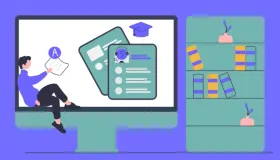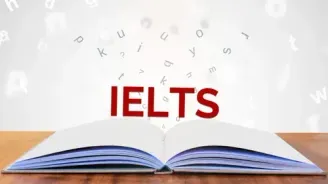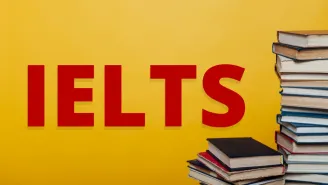Micro Enterprise Credit For Street Youth Reading Answer Passage
Micro Enterprise Credit For Street Youth Reading Answer Passage
Paragraph A. "I am from a large, poor family and for many years we have done without breakfast. Ever since I joined the Street Kids International program, I have been able to buy my family sugar and buns for breakfast. I have also bought myself decent second-hand clothes and shoes."
Doreen Soko
Paragraph B. 'We’ve had business experience. Now I'm confident to expand what we've been doing. I've learnt cash management, and the way of keeping money so we save for re- : investment. Now, business is a part of our lives. As well, we didn't know each other before - now we've made new friends.'
Fan Kaoma
Participants in the Youth Skills Enterprise Initiative Program, Zambia
Introduction
Paragraph C. Although small-scale business training and credit programs have become more common throughout the world, relatively little attention has been paid to the need to direct such opportunities to young people. Even less attention has been paid to children living on the street or in difficult circumstances.
Paragraph D. Over the past nine years, Street Kids International (S.K.I.) has been working with partner organisations in Africa, Latin America and India to support the economic lives of street children, The purpose of this paper is to share some of the lessons S.K.I. and our partners have learned.
Background
Paragraph E. Typically, children do not end up on the streets due to a single cause, but to a combination of factors: a dearth of adequately funded schools, the demand for income at home, family breakdown and violence. The street may be attractive to children as a place to find adventurous play and money. However, it is also a place where some children are exposed, with little or no protection, to exploitative employment, urban crime, and abuse.
Paragraph F. Children who work on the streets are generally involved in unskilled, labour-intensive tasks which require long hours, such as shining shoes, carrying goods, guarding or washing cars, and informal trading. Some may also earn income through begging, or through theft and other illegal activities. At the same time, there are street children who take pride in supporting themselves and their families and who often enjoy their work. Many children may choose entrepreneurship because it allows them a degree of independence, is less exploitative than many forms of paid employment, and is flexible enough to allow them to participate in other activities such as education and domestic tasks.
Street Business Partnerships
Paragraph G. S.K.I. has worked with partner organisations in Latin America, Africa and India to develop innovative opportunities for street children to earn income.
- The S.K.I. Bicycle Courier Service first started in the Sudan. Participants in this enterprise were supplied with bicycles, which they used to deliver parcels and messages, and which they were required to pay for gradually from their wages. A similar program was taken up in Bangalore, India.
- Another successful project, The Shoe Shine Collective, was a partnership program with the Y.W.C.A. in the Dominican Republic. In this project, participants were lent money to purchase shoe shine boxes. They were also given a safe place to store their equipment and facilities for individual savings plans.
- The Youth Skills Enterprise Initiative in Zambia is a joint program with the Red Cross Society, and the Y.W.C.A. Street youths are supported to start their own small business through business training, life skills training and access to credit.
Lessons learned
Paragraph H. The following lessons have emerged from the programs that S.K.I. and partner organisations have created.
- Being an entrepreneur is not for everyone, nor for every street child. Ideally, potential participants will have been involved in the organisation's programs for atleast six months, and trust and relationship building will have already been established.
- The involvement of the participants has been essential to the development of relevant programs. When children have had a major role in determining procedures, they are more likely to abide by and enforce them.
- It is critical for all loans to be linked to training programs that include the development of basic business and life skills.
- There are tremendous advantages to involving parents or guardians in the program, where such relationships exist. Home visits allow staff the opportunity to know where the participants live, and to understand more about each individual’s situation.
- Small loans are provided initially for purchasing fixed assets such as bicycles, shoe shine kits and basic building materials for a market stall. As the entrepreneurs gain experience, the enterprises can be gradually expanded, and consideration can be given to increasing loan amounts, The loan amounts in S.K.I. programs have generally ranged from US$30-$100.
- All S.K.I. programs have charged interest on the loans, primarily to get the entrepreneurs used to the concept of paying interest on borrowed money. Generally, the rates have been modest (lower than bank rates).
Conclusion
Paragraph I. There is a need to recognise the importance of access to credit for impoverished young people seeking to fulfil economic needs. The provision of small loans to support the entrepreneurial dreams and ambitions of youth can be an effective means to help them change their lives. However, we believe that credit must be extended in association with other types of support that help participants develop critical life skills as well as productive businesses.
Let’s explore the questions and answers of the Micro Enterprise Credit For Street Youth Reading passage.
Micro Enterprise Credit For Street Youth Reading Answers with Sample Questions
Have you read the passage? Now, take the test and find Micro Enterprise Credit For Street Youth Reading answers! Try to answer these questions by yourself before you sneak a peek at the answers given below.
Check Out Top 35+ IELTS Reading Practice Test Questions with Answers
Below are some top 35+ free IELTS Reading Practice test online questions with detailed answers to enhance your IELTS preparation online. We have provided sample passages for each test type for your reference.
- What Is Exploration Reading Answers
- Effects Of Noise Reading Answers
- The Discovery Of Baby Mammoth Reading Answers
- The Dead Sea Scrolls Reading Answers
- The Ring-Tailed Lemur Reading Answers
- Why We Need To Protect Polar Bears Reading Answers
- Nutmeg A Valuable Spice Reading Answers
- What Is Meaning Reading Answers
- Cutty Sark Reading Answers
- The Step Pyramid Of Djoser Reading Answers
- South Pole Adventurer Reading Answers
- The Future Of Work Reading Answers
- Ambergris Reading Answers
- Trees In Trouble Reading Answers
- Could Urban Engineers Learn From Dance Reading Answers
- The Flavour Of Pleasure Reading Answers
- The Value Of A College Degree Reading Answers
- Why You Should Delegate Tasks To Team Members Reading Answers
- Corporate Social Responsibility Reading Answers
- Forest Management In Pennsylvania USA Reading Answers
- Making Time For Science Reading Answers
- The Power Of Play Reading Answers
- Coastal Archaeology Of Britain Reading Answers
- How The Other Half Thinks Reading Answers
- Changes In Reading Habits Reading Answers
- The Forgotten Forest Reading Answers
- When Conversations Flow Reading Answers
- Attitudes Towards Artificial Intelligence Reading Answers
- The Ingenuity Gap Reading Answers
- A Bar At The Folies Reading Answers
- Booking A Wessex Cottages Holiday Reading Answers
- Sunset Tours Reading Answers
- Bird Migration Reading Answers
- Clutter Bugs Beware Reading Answers
- The Hidden Histories Of Exploration Exhibition Reading Answers
- Calisthenics Reading Answers
- Having A Lovely Time Reading Answers
- The Return Of Huarango Reading Answers
- Summer Activities At London Kew Gardens Reading Answers
- Computer Games For Preschoolers Reading Answers
- Extinct The Giant Deer Reading Answers







